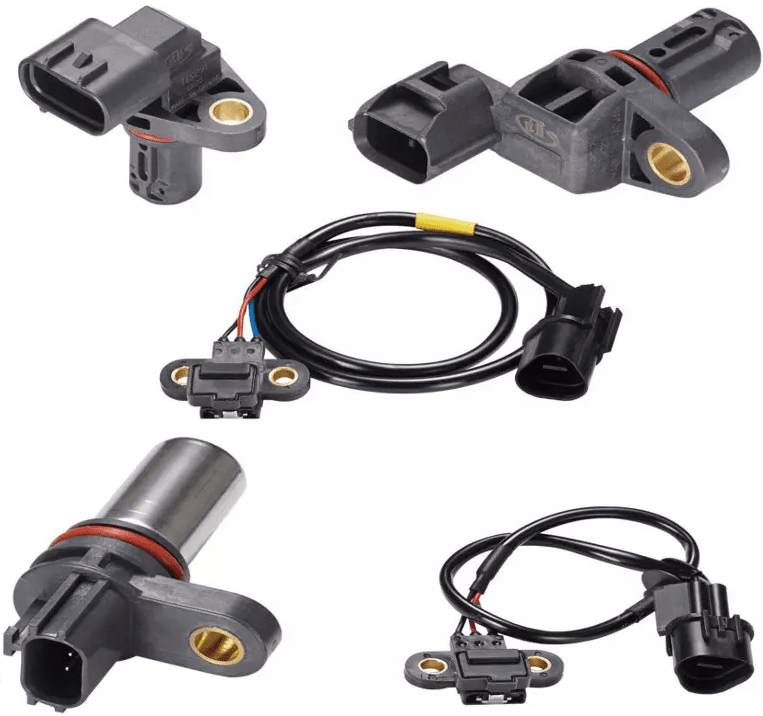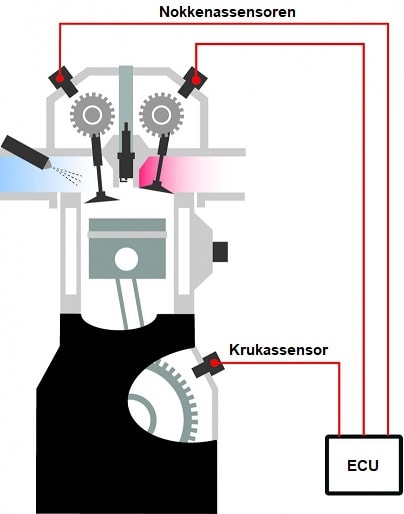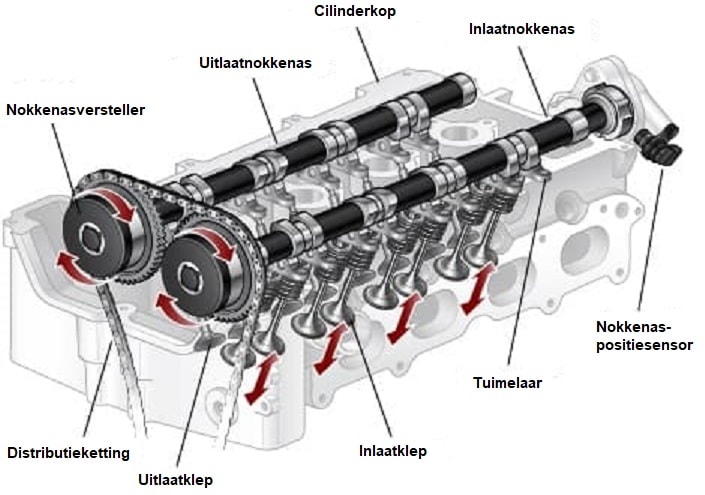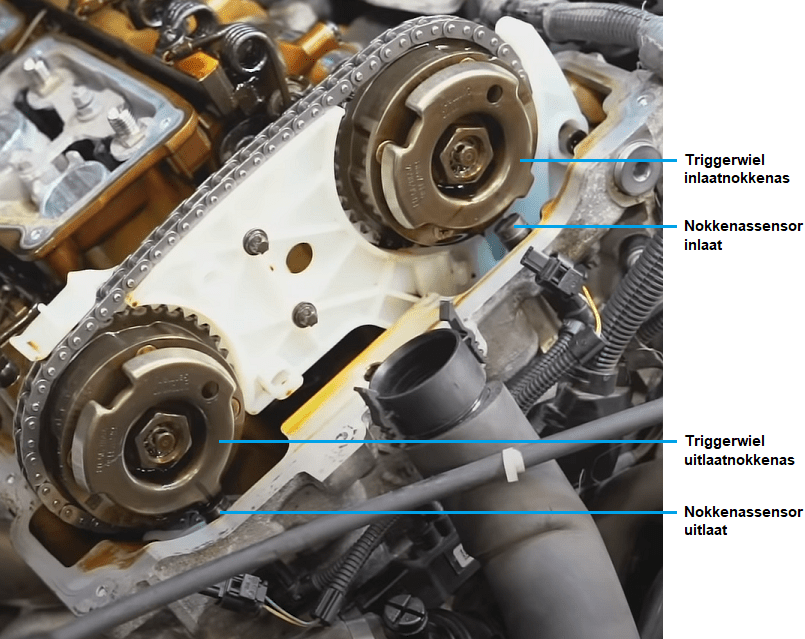Subjects:
- Preface
- Advantages of an engine with a camshaft position sensor
- Positioning of the camshaft position sensor in the cylinder head or valve cover
Preface:
Combustion engines can be equipped with one or more camshaft position sensors. These position sensors measure the pattern of the reference disk (rotor) mounted on the transverse side of the camshaft, or the pattern of a longitudinal section of the camshaft.
The signal from the camshaft position sensor supplements the crankshaft signal for the engine management system:
- the crankshaft position sensor is used to determine engine speed and crankshaft position;
- based on the signal from the camshaft sensor, the engine management system can determine the stroke of the piston moving from ODP to TDC.
The camshaft is often designed as a Hall sensor and receives a supply voltage and ground from the ECU. The signal, in the form of a block voltage, is sent to the ECU via the signal wire.

Advantages of an engine with a camshaft position sensor:
Not all engines with an engine management system and computer-controlled injection and ignition are equipped with camshaft sensors. However, camshaft sensors make the following extensions possible:
- Individual control of injectors and ignition coils: without a camshaft signal, individual control of ignition coils and injectors is not possible, because the crankshaft signal is not sufficient: after all, each duty cycle consists of two crankshaft rotations and only one camshaft rotation. Engines without a camshaft sensor use a DIS ignition coil that sparks all spark plugs and batch injection every crankshaft rotation;
- Camshaft adjustment: to obtain extra torque, or specifically for regeneration purposes (diesel engines with particulate filter), the ECU must be able to read the position of the camshaft in order to properly control the camshaft adjustment;
- Error recognition: In the event of timing problems, a deviation in the crank and camshaft ratio is detected. A fault description can be: “wrong installation combination” or “ratio of crankshaft and camshaft signals out of tolerance”.

Positioning the camshaft position sensor in the cylinder head or valve cover:
There are several ways the camshaft sensor reads the camshaft position:
- by a cam cartridge on the camshaft: the sensor is then usually mounted on the cylinder head cover, at the level of the timing belt, or screwed onto a separate camshaft housing, as shown in the drawing below;
- on the camshaft is a trigger wheel (other possible names: reference disc, position disc, rotor with notches and recesses of different sizes. The camshaft sensor is screwed into the cylinder head in that case.

The following figure shows a BMW engine with a new timing chain and guides fitted. The trigger wheels (reference wheels) are loose discs that are clamped against the camshaft with the central bolt. The trigger wheels have multiple notches and cutouts of different sizes. Both camshaft sensors (positioned right below the trigger wheels) read the course of the notches and recesses of the trigger wheels.
Using the pattern of the trigger wheels, the engine management system can already determine within one camshaft revolution which cylinder starts the compression stroke. Then the system can adjust the injection and ignition to run the engine. The engine will start after a short starting time.

Measure the camshaft sensor signal with the oscilloscope:
In most cases, if a camshaft sensor is faulty, a DTC (Trouble Code) will be stored. Using an oscilloscope, we can measure the camshaft signal while the engine is starting or running. Usually we measure the camshaft signal simultaneously with the crankshaft signal to check the timing of the distribution. This method is explained on the page about the crankshaft position sensor.

Related pages:
